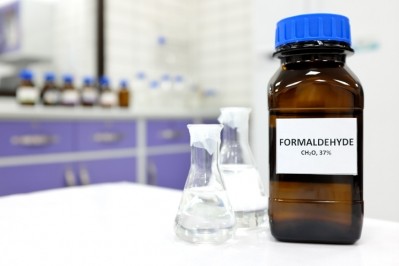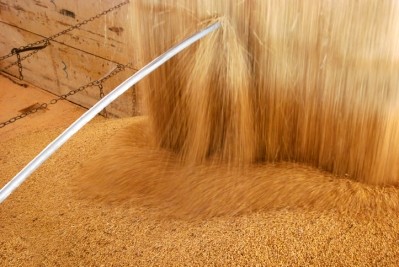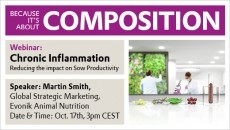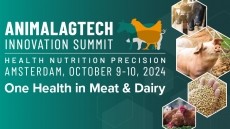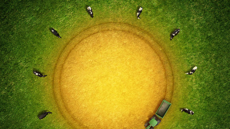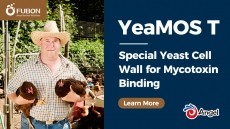Review: Mitigation strategies must continue to be investigated and adopted to avoid ASF entry to the US through feed

Megan Niederwerder, assistant professor of diagnostic medicine and pathobiology in the College of Veterinary Medicine, Kansas State University, recently published an overview on the collective feed research related to swine viruses and specifically to the African Swine Fever (AFS) virus.
The US National Pork Board provided funding for her study.
“Epidemiological evidence has linked contaminated feed with African swine fever virus field outbreaks in both Europe and Asia,” Niederwerder said. “A rapidly expanding geographic distribution of African swine fever virus continues to increase the risk of US incursion. With economic losses of African swine fever virus introduction into the US swine herd estimated at more than US$15bn due to production losses and market disruption, the importance of preventing entry cannot be overstated.”
ASF is the most significant disease threat to swine globally. Without an effective vaccine or treatment, the primary objective of negative countries is to prevent ASF virus infection in pigs.
Significant quantities of feed ingredients used for swine diets are traded worldwide and may be imported from countries with ASF, said the specialist. If feed ingredients are contaminated with the virus, they can serve as potential routes for the introduction and transmission of that disease. “As thousands of metric tons of swine feed ingredients are imported each year into the US from countries with active ASF outbreaks, it is critically important that mitigation strategies be investigated and adopted to reduce the risk of ASFV entry through this route.”
ASF virus survival in feeds in transit
Since the 2013 introduction of porcine epidemic diarrhea virus into the US, researchers have investigated the potential role of feed and feed ingredients for the transboundary spread of swine diseases.
“Investigations in my laboratory have characterized the stability of the ASF virus in feed ingredients subjected to transoceanic shipment conditions, the virus’s transmissibility through the natural consumption of plant-based feed, and the mitigation potential of certain feed additives to inactivate African swine fever virus in feed,” said Niederwerder.
Dee et al. (2018), to evaluate the risk of ASF virus survival in feeds during transit, selected 12 feeds, ingredients, or products of animal origin based on import volume and use in swine feed.
Ingredients included conventional soybean meal, organic soybean meal, soy oilcake, distillers dried grains with solubles (DDGS), lysine, choline, vitamin D, moist cat food, moist dog food, dry dog food, pork sausage casings, and complete feed.
Following inoculation with ASFV Georgia 2007, ingredients were exposed to fluctuating temperatures and humidity that replicated real-world meteorological conditions during transoceanic shipment.
Ingredients were tested for the presence of infectious virus at the conclusion of the simulated shipment model. After 30 days of transatlantic shipment conditions, ASFV Georgia 2007 was broadly stable across diverse ingredients, with infectious virus being detected in 75% (9/12) of the tested ingredients, including conventional soybean meal, organic soybean meal, soy oilcake, choline, moist cat food, moist dog food, dry dog food, pork sausage casings, and complete feed.
Control measures
Niederwerder’s article looks at potential ways to reduce African swine fever virus risk through feed biosecurity as well as through both physical and chemical mitigation protocols, such as heat treatment, storage time, and antimicrobial feed additives.
Feed mill biosecurity
Feed, ingredient, and feed mill biosecurity is essential for reducing infectious disease risks at all stages of swine production, and implementation of biosecurity procedures focused on feed can help address these risks, she noted.
Recently, the Canadian Food Inspection Agency (CFIA) developed risk assessment criteria for livestock feed mills and published the risk factors identified as key for feed mill safety and security.
Among the identified factors were manufacturing practices allowing feed contamination through open equipment; use of at-risk imported feed ingredients; control measures for incoming ingredients, such as analysis certificates or supplier audits; and controls for finished feed, such as single-use packaging material and transport sequencing, said Niederwerder.
Antiviral activity of feed additives
Feed additives with antimicrobial activity against ASFV and other swine viruses have gained substantial interest in the wake of feed risk awareness and the need for antibiotic alternatives, she reported.
Additive classes that have been investigated for antiviral activity include aqueous formaldehyde, medium-chain fatty acids, short-chain fatty acids, organic acids, and essential oils.
Mechanistically, these antimicrobial products inactivate viruses in different ways and regulations on use vary by country, said the expert. “For example, medium-chain fatty acids (MCFA) are believed to reduce virus infectivity by disrupting the viral envelope, leading to deconstruction of the virion and an inability to bind to the host cell for entry.”
A second example is aqueous formaldehyde, which is believed to reduce virus infectivity through alkylation and cross-linking of viral nucleic acids and proteins, she said.
“It is important to note that most methods of mitigation do not eliminate ASFV DNA or other viral nucleic acid from feed, underscoring the importance of determining virus biological infectivity after mitigation is applied," said Niederwerder.
